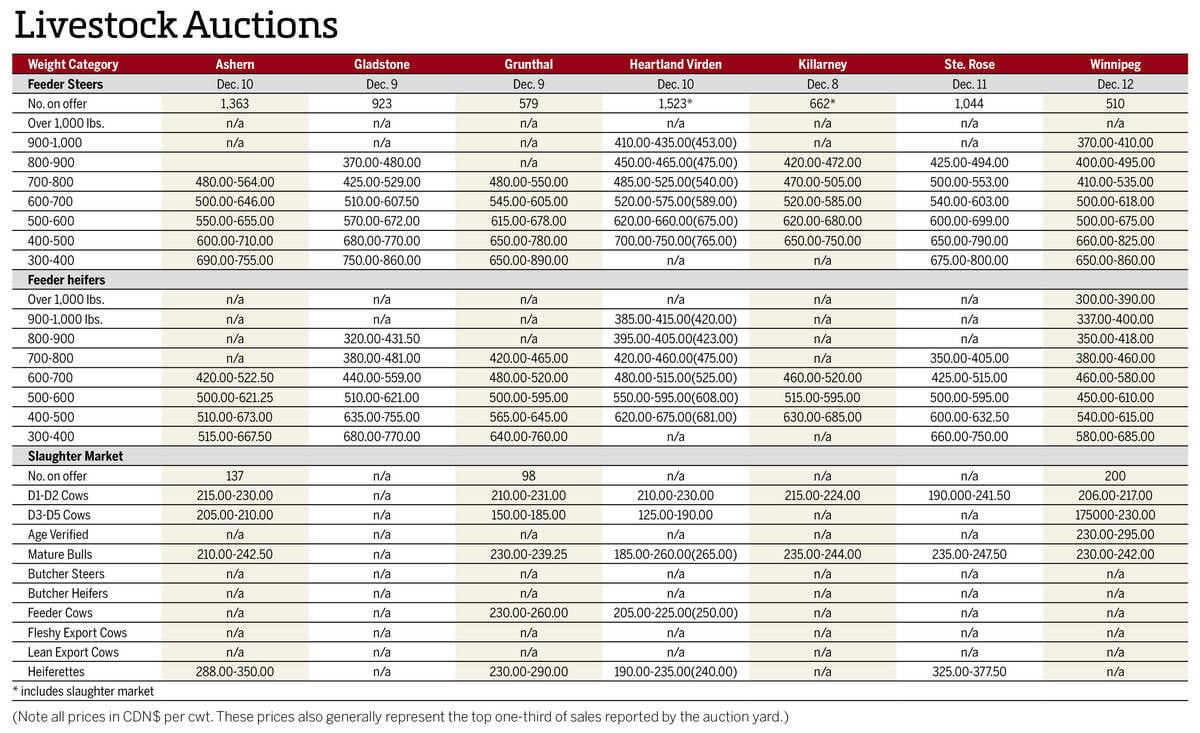The July canola contract on the Intercontinental Exchange reached a significant price level during the week ended May 1.
The July contract climbed above $700 during the week, before running into resistance and backing away. The contract still gained more than $130 per tonne in just over six weeks, to trade well above most major moving averages.
It is quite likely July canola will continue its uptrend as Canadian exports continue at a strong pace — 170,800 tonnes for the week ended April 27, according to the Canadian Grain Commission. The total exports for the 2024-25 marketing year so far are 7.694 million tonnes, well above 4.546 million from one year ago, meaning demand needs to be rationed and prices need to go up.
Read Also

Manitoba cattle prices Dec. 16
Here’s what local farmers were getting paid last week for their cattle at Manitoba livestock auction marts; prices covering the week Dec. 8-12, 2025.
But this doesn’t mean canola prices won’t see any obstacles on their way up.
Crude oil suffered its worst performing month since November 2021 due to fears of a global recession and OPEC+ plans to increase output later this year. Brent crude oil hadn’t been around the US$60 per barrel level since February 2021. The weakness in crude pressured vegetable oil markets with Malaysian palm oil and European rapeseed also seeing declines.
The ongoing harvest of South America’s record soybean crop and China’s reluctance to import soybeans from the U.S. may also create a knock-on effect to canola. Currently, U.S. soybeans are being planted at a rapid pace due to warmer weather, which is also bringing down soybean prices.
Of course, canola’s rise could change in an instant if China decides to impose a 100 per cent tariff on canola seed, just as it did on canola oil and meal earlier this year.
July canola may see plenty of support in the coming weeks, but the climb upwards may be harder than expected.
















